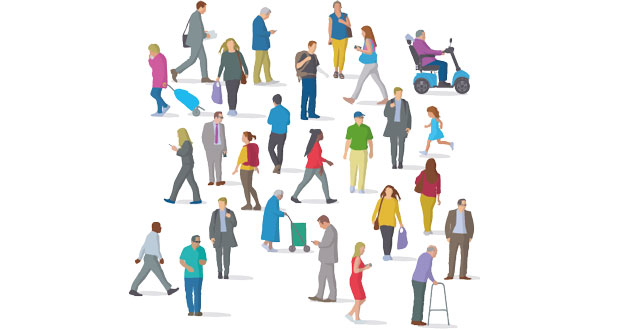 THE WORKPLACE PSYCHOLOGIST’S VIEW
THE WORKPLACE PSYCHOLOGIST’S VIEW
BECKY TURNER,
WORKPLACE PSYCHOLOGIST AT CLAREMONT
It’s crucial that every generation feels seen and heard. This is how employees know they’re valued and supported and how employers ensure motivated, happy, healthy, and productive teams.
Overall, the UK has developed an obsession with generational thinking and the idea that every generation is vastly different from the one before. While there are differences, of course, multi-generational workforces have been the norm for hundreds of years, and people of all ages have worked together.
Focusing too much on generational stereotypes can limit our understanding of what matters fundamentally: we are all people. However, there are some profound challenges for employers and a responsibility to ensure everyone feels included.
The younger generation’s low job satisfaction and burnout are hardly surprising. They’ve grown up in an ‘always on’ culture, bombarded with information 24/7. They are repeatedly told they’re the lazy, entitled generation by the media, so they must push harder to prove themselves. Plus, they’re acutely aware home ownership may never be in reach. Throw into the mix that the world is burning politically and environmentally, and it’s clear they have much to feel disenfranchised about.
At the other end of the spectrum, the over 50s feel unseen and unsupported too, perhaps a reflection of their career stage, with greater support being given to more junior colleagues, or the broader weight of personal responsibilities this group has due to double care responsibilities as they look after children and parents.
While employers can’t directly address these external issues, they can use them to understand their people better and ensure they promote belonging and inclusion at work. Employers must concentrate on creating positive cultures, experiences, and environments that support not only how work is done but also how employees feel.
One effective way to achieve inclusion is to adopt meaningful recognition and praise in the workplace. Replace impersonal staff ‘thank yous’ with more intentional praise, where people’s individual and team contributions are discussed and acknowledged publicly. Recognition is closely linked with inclusion and the nurturing of positive cultures.
The physical environment can also help here. Ensuring workspaces include areas for individual work, teamwork, socialisation, relaxation, and wellbeing makes it possible to cater to various needs. Choice allows all generations to personalise the workplace experience to suit their needs.
This is all tied to the broader topic of diversity and inclusion, which is about including and involving everyone. Employers must factor this into their D&I strategies as the working age increases. Easy-to-read signage, spaces fitted with hearing loops, and accessible cupboards and doorways for those with mobility issues will all play a part. So will supportive cultures that encourage employees to stay socially connected and active.
When you treat workforces as individuals rather than oversimplified groups, understand and cater to their needs, value diversity and inclusion in all aspects of your decision-making, and create cultures that prioritise support and recognition, all employees will feel seen, heard, and valued. Nothing less will do.





